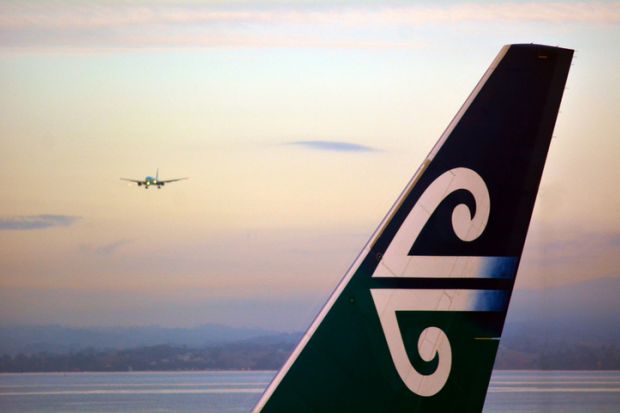Overdue student loan repayments have ballooned in New Zealand as Kiwis dodge their debts by decamping overseas.
Total overdue debt rose by NZ$188 million (£90 million) to more than NZ$2.2 billion in 2022-23, according to the student loan scheme’s latest annual report, with more than 90 per cent of the increase attributed to New Zealanders living overseas.
Offshore-based Kiwis comprise only about 100,000 of the 635,000 students and graduates with outstanding loans. But those with overdue debts owe an average of NZ$26,500 each, compared with NZ$5,600 among their New Zealand-based counterparts.
The government’s cost of lending rose by 15 per cent last financial year to over 43 cents in the dollar, with more than NZ$550 million of the almost NZ$1.4 billion loaned that year unlikely to be repaid.
Lending costs are now easily at their highest level since first-year fees were abolished by Jacinda Ardern’s Labour government in 2018. The costs of lending were among the factors that motivated the policy.
In a foreword to the report, education secretary Iona Holsted says one in six borrowers are not meeting their repayment obligations, and combating the practice has become the “priority” of the Inland Revenue Department. “Particular focus is on those overseas borrowers whose compliance is considerably lower than borrowers based in New Zealand, with 67 per cent of the amount overdue having been overdue for more than five years,” she writes.
In recent years authorities have resorted to arresting loan defaulters at the border, with about a dozen such instances reported since 2016. Critics say the policy risks turning overseas-based Kiwis into “student loan refugees” who feel unable to return home.
Ms Holsted says the report demonstrates the impact of global events such as recession and Covid-19 on tertiary education patterns. “In tight economic times participation and borrowing tend to increase and then flatten or decline in growth periods,” she says. “Student loan repayments also increase alongside rising employment and earnings.”
While the number of borrowers declined by about 12 per cent in 2022-23, average borrowing rose 5 per cent to almost NZ$10,700.
Unlike their Australian counterparts, New Zealand students often borrow to cover their living costs as well as tuition fees. But repayments fall due once they earn just NZ$22,828 a year – about 40 per cent of the repayment threshold in Australia – meaning that many Kiwis find themselves paying off student loans before they complete their courses.
Register to continue
Why register?
- Registration is free and only takes a moment
- Once registered, you can read 3 articles a month
- Sign up for our newsletter
Subscribe
Or subscribe for unlimited access to:
- Unlimited access to news, views, insights & reviews
- Digital editions
- Digital access to THE’s university and college rankings analysis
Already registered or a current subscriber? Login








